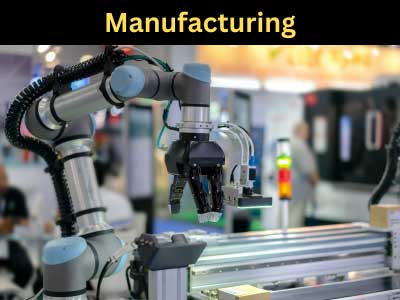Key Takeaway
To save time in manufacturing, optimize labor by balancing man-machine activities. Train employees to be versatile and multitask efficiently. Specialize tasks that significantly impact productivity and ensure workers are well-trained in these areas. Upgrading equipment to more efficient models can also reduce production time.
Implementing automation where possible can streamline processes and reduce manual labor. Regularly review and refine your workflows to eliminate bottlenecks. Lean manufacturing principles help identify and eliminate waste, improving overall efficiency. These strategies not only save time but also boost productivity and profitability.
Streamlining Processes for Time Efficiency
In manufacturing, time efficiency is critical. The more streamlined your processes, the faster your production cycle, which directly impacts profitability. One way to achieve time savings is by identifying bottlenecks in your workflow. These bottlenecks slow down production and can cause unnecessary delays, impacting your overall output.
To streamline processes, manufacturers can adopt workflow mapping techniques like value stream mapping (VSM). This technique helps visualize the entire production process and identifies areas where time is wasted. Additionally, using standardized operating procedures (SOPs) ensures consistency across tasks and minimizes errors that often lead to rework and delays. By streamlining processes, manufacturers can eliminate unnecessary steps, speed up production, and meet deadlines more consistently.

The Role of Automation in Reducing Production Time
Automation plays a pivotal role in reducing production time. By automating repetitive tasks, manufacturers can increase output while minimizing human error. Robots, conveyor systems, and automated sorting machines can perform tasks much faster than human workers, allowing companies to meet high production demands without sacrificing quality.
For example, in automotive manufacturing, assembly lines equipped with robotic arms can significantly reduce the time it takes to assemble a vehicle. What would traditionally take hours can be completed in minutes, thanks to automation. Additionally, automation enables 24/7 production without the need for breaks, further enhancing time efficiency.
Moreover, automation allows for real-time monitoring and control of production systems, ensuring that any issues are identified and resolved quickly before they cause significant downtime. Manufacturers that invest in automation not only save time but also gain a competitive edge by consistently meeting tight production deadlines and customer demands.
How Lean Manufacturing Saves Time and Resources
Lean manufacturing is all about eliminating waste and improving efficiency. One of the core principles of lean is to streamline processes, which naturally leads to time savings. By focusing on value-added activities and eliminating non-value-added steps, manufacturers can reduce cycle times and speed up production.
Techniques like the 5S methodology, which stands for Sort, Set in Order, Shine, Standardize, and Sustain, are used to organize the workplace for maximum efficiency. This methodology not only saves time by ensuring that workers have easy access to tools and materials but also reduces the time spent searching for misplaced items.
Another lean tool, Kaizen, promotes continuous improvement. By fostering a culture where employees constantly seek ways to improve processes, manufacturers can steadily reduce production times and increase overall efficiency. Lean manufacturing allows companies to maximize their output while minimizing waste, ensuring that production runs smoothly and on schedule.
Utilizing Data Analytics for Process Optimization
Data analytics has revolutionized how manufacturers optimize their processes. By collecting and analyzing data from various stages of the production line, manufacturers can gain valuable insights into inefficiencies that may not be visible to the naked eye. These insights allow for data-driven decision-making, which can significantly reduce production time.
For example, predictive analytics can identify patterns in equipment usage, alerting manufacturers to maintenance needs before a machine breaks down. This proactive approach helps minimize downtime, which is one of the biggest time-wasters in manufacturing. Furthermore, data analytics can reveal inefficiencies in labor allocation, allowing companies to adjust staffing levels and assign workers to tasks that maximize productivity.
With real-time data at their fingertips, manufacturers can monitor production lines and make immediate adjustments to keep everything running smoothly. By optimizing processes based on data, manufacturers can reduce production times, minimize waste, and improve overall efficiency.
Minimizing Downtime with Predictive Maintenance
Downtime is one of the most significant contributors to lost time in manufacturing. Every minute a machine is out of service translates into lost productivity. Predictive maintenance offers a solution by using data analytics and sensor technology to predict when equipment is likely to fail. By addressing potential issues before they cause breakdowns, manufacturers can drastically reduce unplanned downtime.
For example, sensors on production machinery can monitor factors like temperature, vibration, and pressure. When these metrics fall outside of normal ranges, the system alerts the maintenance team, allowing them to fix the problem during planned downtime rather than causing a complete halt to production. This proactive approach to maintenance ensures that machines remain operational for longer, saving valuable time.
In addition to reducing downtime, predictive maintenance extends the lifespan of equipment and reduces repair costs. Overall, it’s a win-win strategy for manufacturers looking to save time and money in their operations.
Conclusion
Time-saving strategies in manufacturing are essential for boosting productivity and staying competitive. By implementing streamlined processes, manufacturers can reduce inefficiencies and eliminate unnecessary steps that slow down production. Automation, for example, helps speed up repetitive tasks while ensuring consistency and reducing human error. This not only saves time but also enhances product quality.
Lean manufacturing principles further contribute to time efficiency by eliminating waste and focusing on value-added activities. Using data-driven decisions and predictive maintenance ensures machines are always in top condition, minimizing downtime. These strategies enable manufacturers to meet production goals faster, improve output, and respond to customer demands with greater agility. Ultimately, these combined approaches help manufacturers enhance productivity while cutting costs and maintaining high-quality standards.
